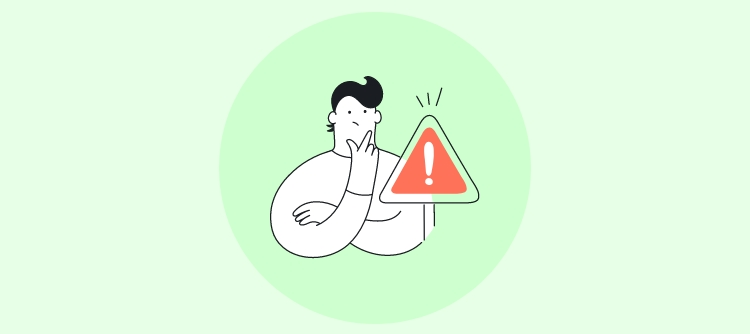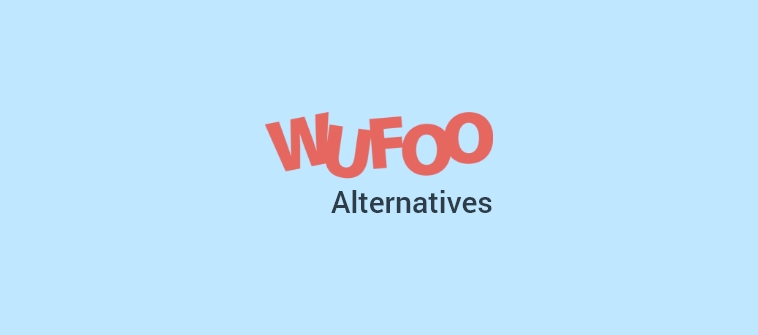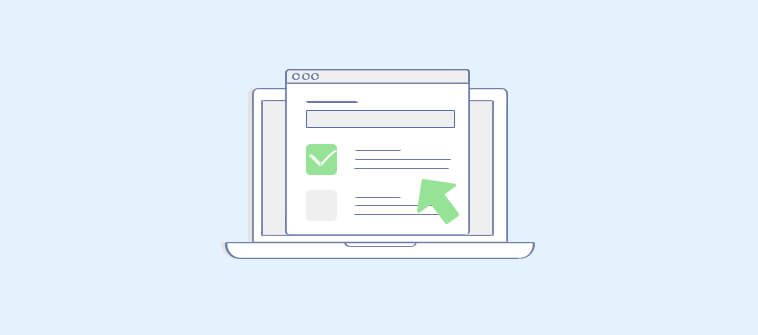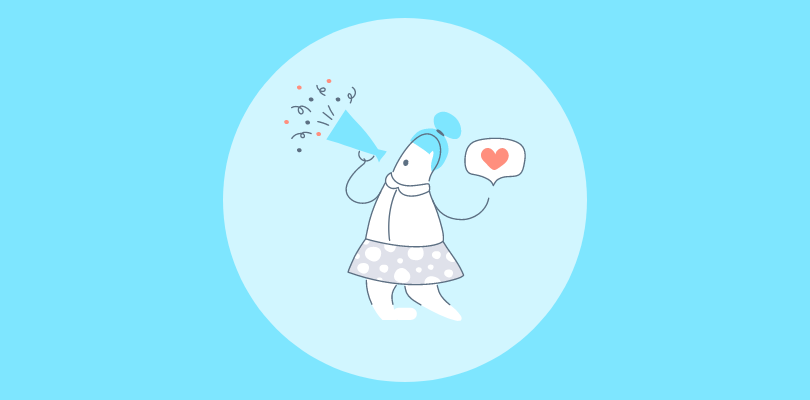
Ever wonder how well-known your brand really is? Let’s face it: not every drink can be Coca-Cola, and not every search engine is Google. In a world where some brands thrive and others struggle, how can you tell where your brand stands?
That’s where brand awareness surveys come in. These surveys are like a health check for your brand, helping you see just how visible and memorable you are to your target audience.
Do they recognize your logo? Do they know what you offer?
This blog will be your guide to creating effective brand awareness surveys. I’ll cover what to ask, show some examples, and discuss how to set one up step by step.
Here we go!
But, a small step before that! Do you know how to create a survey? If not,
here’s a quick tutorial: How to Create a Survey Using ProProfs Survey Maker
What Is a Brand Awareness Survey?
Brand awareness refers to the extent to which your customers know about your brand and your product or service offerings.
It is a direct reflection of how visible or invisible you are to them and whether your brand is the first one to pop into their minds when they think of their problems (for example, buying a new dress or getting their mobile phone repaired).
Brand awareness surveys are conducted to find out how your brand is perceived by your target market. Are you a household name, a last option, or simply a blip on their radar that is barely noticed? A brand awareness survey is what you need to uncover that information!
If you want, you can expand the playing field and also include employees, prospects, and stakeholders to analyze their perception of your brand.
The best part is these surveys can be created and shared online with tools like ProProfs Survey Maker. Here is a brand awareness survey example:
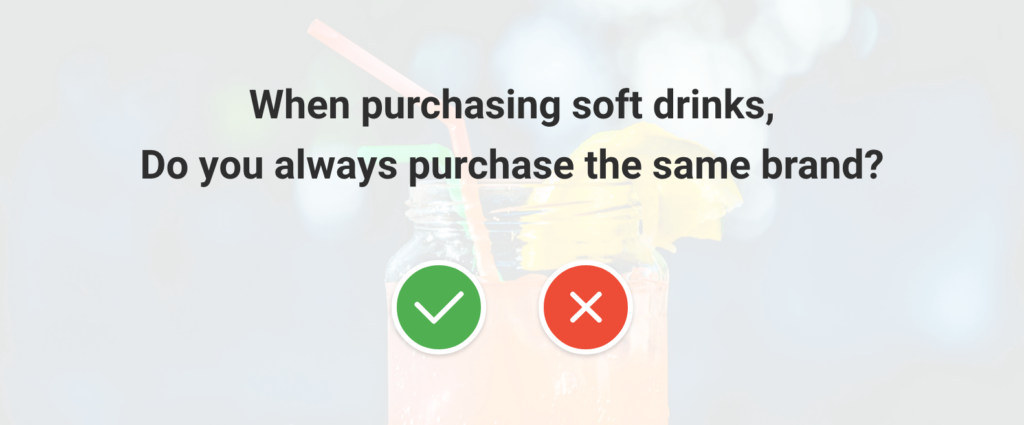
Why Should You Measure Brand Awareness?
Measuring brand awareness is essential not just to know how many people have heard of your brand—it’s about understanding how deeply your brand is embedded in the consumer psyche and leveraging that knowledge to make smarter business decisions.
Before going into details, let’s imagine a scenario where you need to buy a phone and related accessories. Now, when you are buying something like a phone cover, you might simply go for the design rather than paying much attention to the brand.
But what about your phone? How much does the brand matter to you in this case?
Here is an interesting number regarding this: according to a study, 68% of consumers pay particular attention to the brand when buying electronic goods.
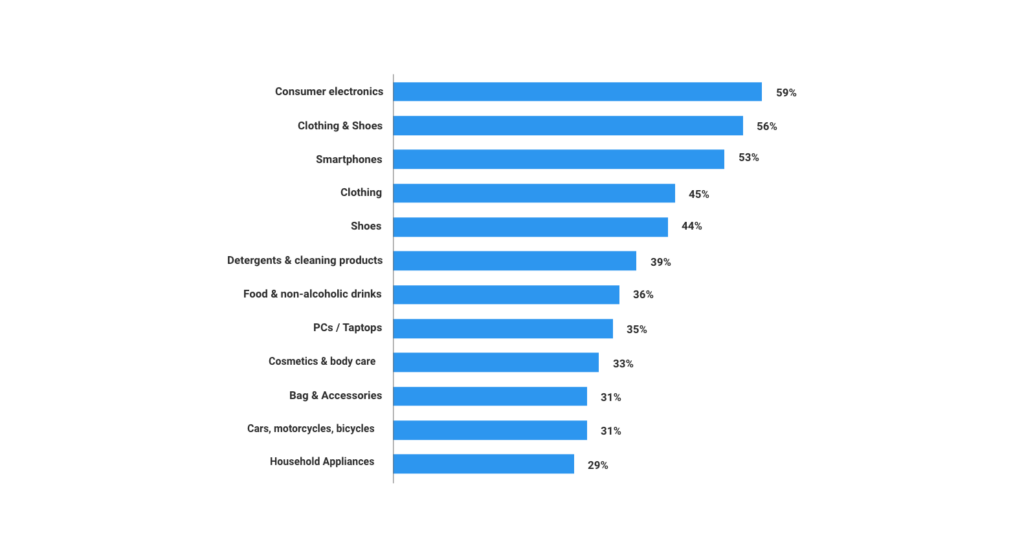
Here’s a detailed explanation of why you need to conduct brand awareness surveys:
- Understand Market Position: Knowing how familiar your target audience is with your brand gives you a clear picture of your standing in the market compared to competitors. This awareness helps gauge your brand’s strength and identify areas for strategic improvements.
- Guide Marketing Efforts: Brand awareness insights direct your marketing strategies, helping you decide whether to focus on increasing visibility, enhancing brand recall, or maintaining top-of-mind awareness. This tailored approach ensures that your marketing dollars are spent effectively.
- Track Campaign Effectiveness: By measuring brand awareness before and after marketing campaigns, you can assess the impact of specific strategies and promotions. This feedback loop is invaluable for refining tactics and understanding what resonates with your audience.
- Foster Brand Loyalty: High brand awareness is often a precursor to brand loyalty. As more people recognize and remember your brand, they are more likely to choose your products over competitors’ options, become repeat customers, and recommend your brand to others.
- Attract New Customers: A well-recognized brand can attract new customers more easily. People are more inclined to try a product or service from a brand they know about than one they have never heard of.
- Enhance Business Value: Strong brand awareness can increase your company’s valuation by enhancing customer perceptions and business stability. This is particularly advantageous for attracting potential investors or making business acquisitions.
What Are the 4 Levels of Brand Awareness?
Brand awareness is typically categorized into four distinct levels, each representing a different stage of consumer familiarity with a brand. Each level of brand awareness builds on the previous one, creating a ladder that brands aspire to climb.
The higher the level of awareness, the stronger the brand’s market position and the greater its competitive advantage.
Let’s analyze the stages in-depth:
1. Brand Recall
This is the lowest level of brand awareness and involves consumers being able to recall your brand name from memory when prompted by a product category or need. For example, when asked about fast food, a person might immediately think of “McDonald’s” or “Burger King.” Brands at this level have made a basic connection in the consumer’s mind but need to deepen that impression to increase loyalty.
2. Brand Recognition
At this level, consumers can recognize a brand when they see it. This doesn’t necessarily mean they can recall the brand without visual cues, but they know the brand when presented with it through logos, slogans, or packaging.
Nike is a stellar example of brand recognition—one of the most recognized brands in the world. When you see the iconic “Swoosh” logo or hear the slogan “Just Do It,” Nike immediately comes to mind.
This instant recognition is not just about the visual or auditory recall but also the association of the brand with attributes like innovation, quality, and resilience in sports apparel and footwear.
3. Top-of-Mind Awareness
Top-of-mind awareness is achieved when a brand is the first to come to a consumer’s mind in a particular category. This level of awareness is a strong indicator of a brand’s popularity and is highly sought after because it significantly increases the likelihood of purchase. For example, many people will think of “Coca-Cola” first when asked about soda brands.
4. Brand Dominance
This is the highest level of brand awareness, where a brand becomes synonymous with the product category itself. At this stage, the brand is not only the first to be recalled but also dominates conversations and perceptions within its category.
For instance, “Kleenex” has become a generic term for tissues in many parts of the world, demonstrating brand dominance.
55 Brand Awareness Survey Questions to Ask Your Target Audience
Here is a comprehensive list of 55+ questions designed to delve deeply into various aspects of brand awareness—from basic recognition to recall, loyalty, and value perception.
Brand Recall and Recognition
- Can you name any brands that come to mind when you think of [industry/product category]?
- When you see [brand’s logo], which company do you think of?
- What is the first brand that comes to mind when you think about [product/service]?
- Have you heard of [Your Brand]?
- What words or images come to mind when you think of [Your Brand]?
- Can you recall any slogans or taglines associated with our brand?
- Where have you seen advertisements for our brand?
- Can you remember any specific advertisements from our brand?
- What colors do you associate with our brand?
Brand Reputation and Trust
- How would you describe the reputation of [Your Brand]?
- Do you trust [Your Brand]? Why or why not?
- What qualities do you associate with [Your Brand]?
- How reliable do you find the products/services offered by [Your Brand]?
- Have you read any reviews about [Your Brand]? What did they say?
- How does [Your Brand] compare to competitors in terms of credibility?
- Would you consider [Your Brand] ethical in its business practices?
Brand Experience
- Have you ever purchased a product or service from [Your Brand]?
- Can you describe your last experience with [Your Brand]?
- How satisfied were you with your last interaction with our brand?
- Were there any memorable aspects of your experience with [Your Brand]?
- How likely are you to purchase from [Your Brand] again?
- What improvements, if any, would you suggest for [Your Brand]?
- How was the customer service experience with [Your Brand]?
Brand Loyalty
- How likely are you to recommend [Your Brand] to others?
- Do you feel a sense of loyalty to [Your Brand]? Why or why not?
- What would make you switch from [Your Brand] to another brand?
- What motivates you to continue choosing [Your Brand] over competitors?
- How often do you use products/services from [Your Brand]?
- What factors contribute to your loyalty to our brand?
- Is there a community around [Your Brand] that you feel a part of?
Brand Perception
- What attributes do you believe [Your Brand] stands for?
- How does [Your Brand] align with your values?
- How innovative do you think [Your Brand] is?
- Would you describe [Your Brand] as a leader in its industry? Why?
- What emotions do you associate with [Your Brand]?
- How would you rate the quality of [Your Brand]’s products/services?
- How does [Your Brand] stand out from its competitors?
Brand Value
- Do you think [Your Brand] offers good value for money?
- How do you perceive the pricing of [Your Brand] compared to competitors?
- Does [Your Brand] offer products/services that meet your needs?
- How transparent do you find the pricing and product information from [Your Brand]?
- Do you think [Your Brand] is responsive to customer needs and feedback?
- How well does [Your Brand] understand its customers?
- How does [Your Brand] contribute to the community or environment?
Brand Awareness Channels
- Through which channels have you learned about [Your Brand]?
- Do you follow [Your Brand] on social media?
- How do you primarily receive updates or news about [Your Brand]?
- Which of [Your Brand]’s marketing campaigns can you recall?
- Have you ever attended any events or webinars hosted by [Your Brand]?
- Do you subscribe to any newsletters from [Your Brand]?
- Have you participated in any promotions or contests offered by [Your Brand]?
Demographics (to tailor further communications and offers)
- What is your age group?
- What is your gender?
- What is your employment status?
- Which region or city do you reside in?
- What is your household income range?
- What level of education have you completed?
- What are your primary interests or hobbies?
- Do you have children?
- What type of media do you consume most often (TV, online, print)?
When to Conduct a Brand Awareness Survey?
Conducting a brand awareness survey is a strategic decision that can provide invaluable insights into how your brand is perceived in the marketplace.
Although you can conduct them at any time you deem appropriate, here are some touchpoints when it proves the most beneficial:
Before Launching Marketing Campaigns
Before you roll out a new marketing campaign, conducting a brand awareness survey can establish a baseline of how well your brand is recognized and perceived. This baseline helps you later pinpoint the impact of your marketing efforts by comparing pre-and post-campaign data.
After a Marketing Campaign
After your campaign wraps up, it’s time to measure its success. A brand awareness survey can show you whether your campaign managed to boost your brand’s profile and how perceptions may have shifted as a result.
During Rebranding Efforts
If your company is going through a rebranding, surveys can monitor how well the new brand elements (like logos, taglines, or overall messaging) are being received by the target audience.
When Entering New Markets
Moving into new markets? A brand awareness survey can act as your recon mission, offering insights into how well-known your brand is in these areas and highlighting any local nuances that might affect your reception.
Regular Interval Monitoring
Setting a routine, such as annually or every six months, to check in on your brand’s standing helps you keep a steady pulse on its growth and the evolving perceptions of consumers.
After Significant Market Changes
If the market landscape shifts due to new competitors, changing preferences, or other external factors, it’s a smart move to assess how these changes might have affected your brand’s visibility and reputation.
Customer Lifecycle Milestones
Looking at how new, loyal, or past customers see your brand can offer you a kaleidoscope of perspectives that are invaluable for refining your marketing strategies and enhancing customer relations.
How Do You Measure Brand Awareness in a Survey?
To get the most accurate insights, here are the key steps and strategies you should consider:
Define Your Objectives
Start by defining what aspects of brand awareness you want to measure. Are you interested in unaided recall, aided recall, brand recognition, or top-of-mind awareness? Each requires different types of questions to gather the appropriate data.
Craft Targeted Questions
This step is a continuation of the first, where you categorize your objective and jot down the survey questions accordingly:
- Unaided Brand Recall: Ask respondents to name brands within a certain category without providing any clues or prompts. For example, “What coffee shop brands can you list?”
- Aided Brand Recall: Here, you mention the brand and ask if respondents are aware of it. Questions like “Have you heard of [Brand Name]?” or “Which of these brands are you aware of?” followed by a list including your brand.
- Brand Recognition: Show respondents your logo, tagline, or packaging and ask if they recognize it and can correctly associate it with your brand.
- Top-of-Mind Awareness: Ask respondents to name the first brand that comes to mind in a category. This measures if your brand stands out above others spontaneously.
Use Rating Scales
Incorporate questions that ask respondents to rate their level of familiarity with your brand on a scale (e.g., from “Never heard of it” to “Very familiar”). This can help quantify how deeply ingrained your brand is in the consumer’s mind.
Assess Perceptions and Associations
Ask questions to find out what attributes, emotions, or values consumers associate with your brand. This can help you understand not just brand recall but also the qualitative aspects of your brand image.
Include Demographic Questions
Understanding who is aware of your brand can be as important as how many. Including demographic questions can help you segment the awareness data by age, gender, location, income, etc., to refine your marketing strategies further.
Evaluate Competitive Awareness
Include questions about competitor brands to gauge where you stand relative to them. This could be through direct questions about brand preferences or through scenarios where consumers choose between brands.
Analyze the Data
Once your survey is complete, analyze the data to identify trends and insights. Look at the overall level of awareness, differences among demographic groups, and how well your brand is positioned against competitors.
Follow Up
Conduct follow-up surveys at regular intervals to track changes in brand awareness over time. This can help you see the impact of your marketing efforts and guide future strategies.
10 Tried & Tested Tips for Creating an Effective Brand Awareness Survey
Here are 10 tips to help you craft a survey that yields insightful, actionable data:
- Define Clear Objectives: Determine what you want to achieve—such as measuring brand recall or understanding customer sentiment—to focus your survey effectively.
- Use Varied Question Types: To get a well-rounded view, employ a combination of open-ended questions for qualitative insights and closed questions (multiple-choice and scales) for quantitative data.
- Keep Questions Clear: Ensure questions are straightforward and free from technical jargon to avoid confusion and improve the accuracy of responses.
- Optimize for Mobile: Design your survey for easy completion on mobile devices, considering that many users may access it on their smartphones.
- Offer Incentives: Increase response rates by providing incentives such as discounts, entry into a prize draw, or exclusive content, making participation more appealing.
- Keep It Short: Respect your participants’ time by making surveys concise—ideally under 10 minutes—to maximize completion rates.
- Test the Survey: Run a pilot test with a small audience to identify any issues with questions or survey flow, allowing for adjustments before full deployment.
- Use Visual Aids: When asking about brand recognition, include visuals like logos or product images to help jog memory and elicit more accurate responses.
- Time It Right: Send out surveys at strategic times, such as after a marketing campaign or a significant brand update, to measure their impact on brand awareness.
- Analyze Competitively: Incorporate questions about competitors to understand your brand’s position relative to others in the market, providing context to your data.
How to Create Your Own Brand Awareness Survey with ProProfs Survey Maker?
Conducting a brand awareness survey is easy. However, before you begin, you need to be sure of two things: your goal and your target audience. Your goal can be to understand brand recognition, how people perceive your brand, or what aspects they find the most interesting.
Similarly, your target audience can be women, teenagers, adults, people residing in a particular city, etc.
Once you are sure of these aspects, you can use a free survey software such as ProProfs Survey Maker. Let’s understand how to create brand awareness surveys in 3 simple steps:
Step 1: On your ProProfs Survey Maker Dashboard, click Create a Survey. Then click on the + Create from Scratch button to get started.
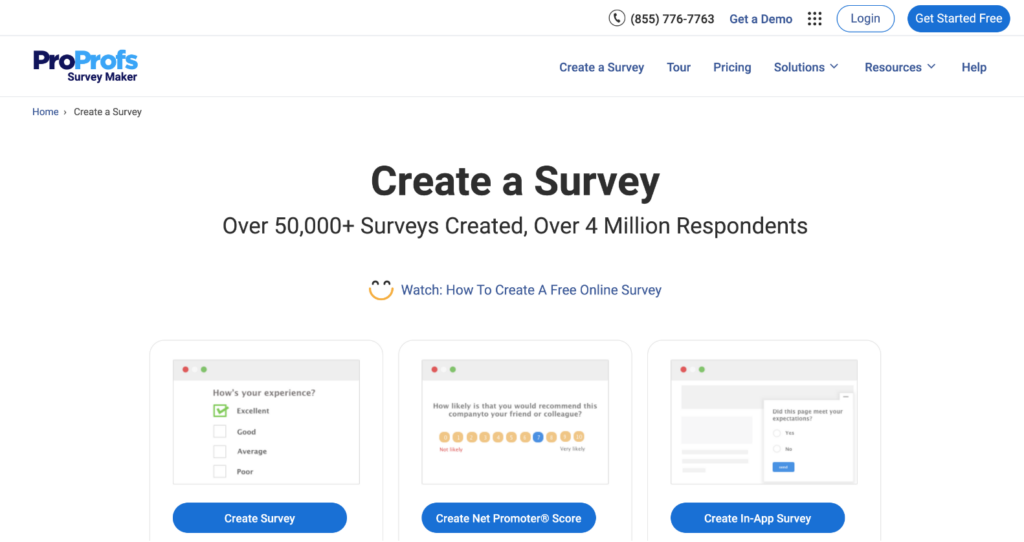
Step 2: Now, you’ll arrive in the editor where you can add several elements to your survey like questions, themes, branding, logo, and so on. Choose a relevant question type such as multiple-choice, checkbox, NPS scale, rating scale, etc. Make sure you include both aided as well as unaided brand awareness questions.
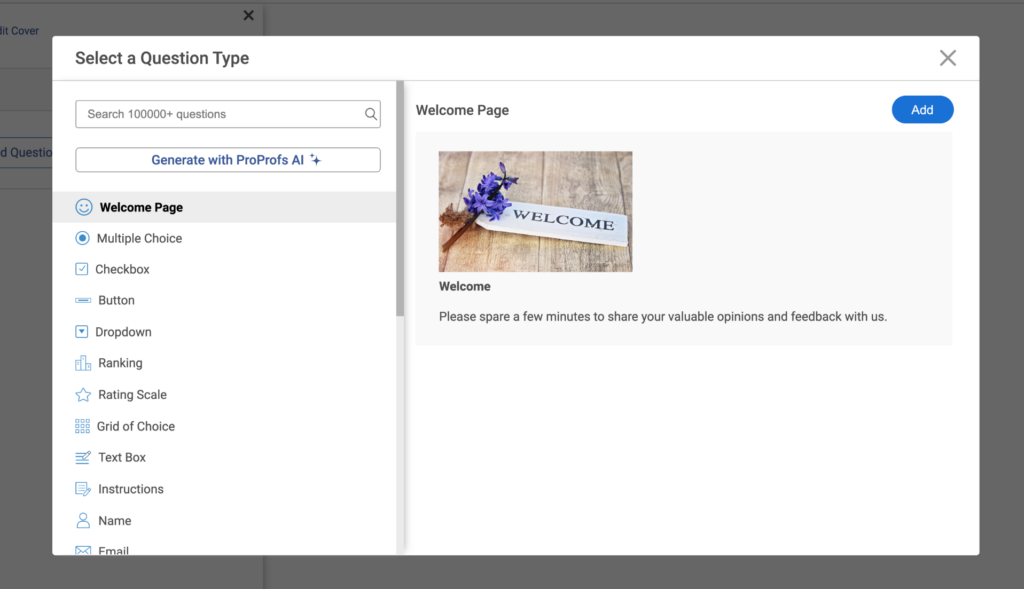
Step 3: Once you are happy with your questions and branding, click Preview to see how the survey will appear to the viewer. Now, click Done.
Congratulations, your survey is ready to use! You can easily send this survey to your audience via email, embed it on your website, or share it on social media platforms. Yes, it’s really that simple!
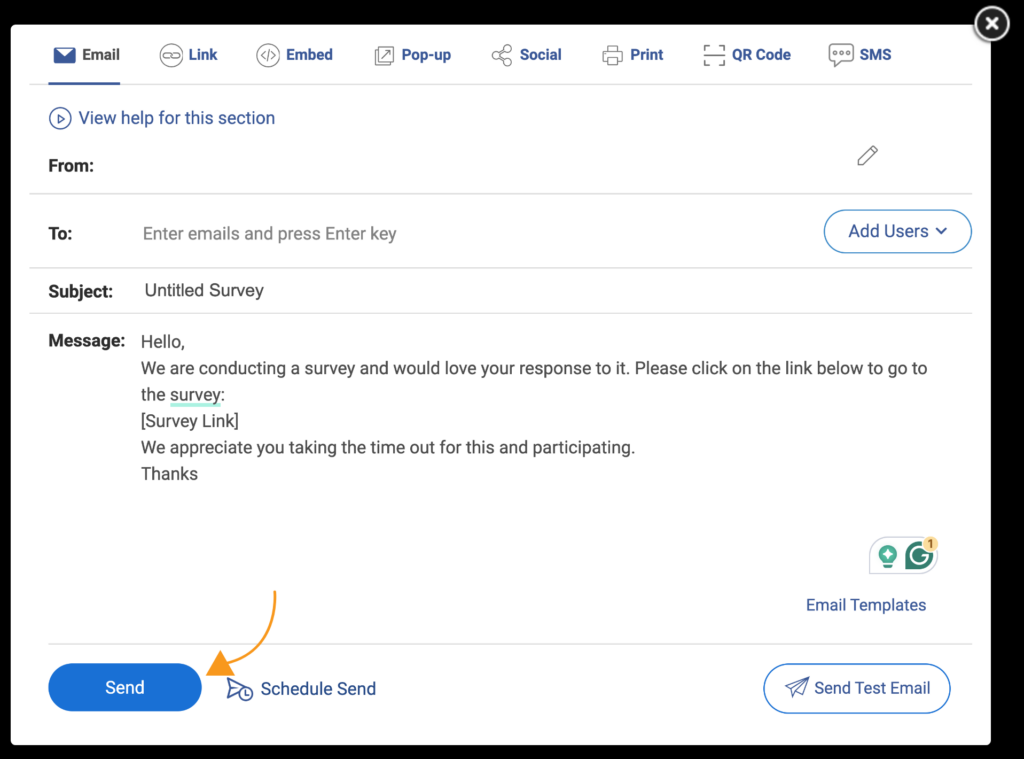
Rise Above Competition With a Brand Awareness Survey
Watch: How to Customize & Add Branding to Your Survey
The right questionnaire for a brand awareness survey can help you find out what consumers think of your brand, how loyal they feel, and how much they trust you. You need to conduct these surveys from time to time, especially after marketing campaigns or events, to gauge your efforts.
You can use the brand awareness survey samples mentioned in this blog to get started. Feel free to tweak the questions according to your needs, and remember to include both open and closed-ended questions.
Now that you know what a brand awareness survey is and why it is important, it’s time to start creating one. To make your own awesome brand awareness survey, sign up for free or get a demo today!
Learn More About Brand Awareness Survey
What are the different types of brand awareness surveys?
The different types of brand awareness surveys are
- Unaided Recall Surveys (top-of-mind awareness)
- Aided Recall Surveys: (recognition via logo, tagline, etc.)
- Brand Recognition Surveys (identifying a brand from visual or textual cues)
- Brand Attribute Surveys (public perception of brand characteristics, values, and personality)
Why should I create a brand awareness survey?
Creating a brand awareness survey is important as it provides insights into your brand’s market position, informs your marketing strategies, measures the effectiveness of advertising campaigns, and identifies areas for improvement.
To whom should I send a brand awareness survey?
Brand awareness surveys should be sent to a diverse mix of participants to ensure comprehensive insights. This includes:
- Current Customers: To gauge loyalty and the effectiveness of ongoing marketing.
- Potential Customers: To understand the reach and potential growth of your brand.
- Former Customers: To learn why they left and what can be done to win them back.
- General Market Audience: For broader insights into brand recognition across different demographic and geographic segments.
Do you want a free Survey Software?
We have the #1 Online Survey Maker Software to get actionable user insights.





